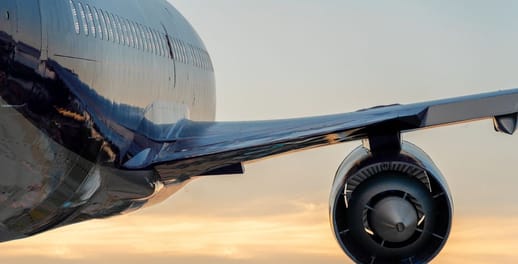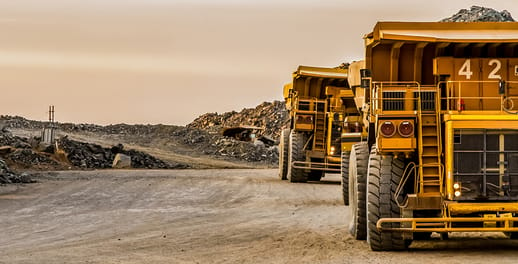The end of the global pandemic was supposed to be good news for the global aviation sector. While the lifting of restrictions on movement in most of the world (with some notable exceptions) has reignited global demand for travel.
The initial fears around the emergence of the Omicron variant appear to have subsided, providing reasons for optimism for the African aviation sector – a sector that has been disproportionately impacted by Omicron border closures. Borders have re-opened and capacity is returning to the market. According to data published by the African Airlines Association (“AFRAA”), intra-African connectivity reached 76% of pre-Covid levels in November 2021, increased to 80% in December, and is forecast to have fallen to 76% in January 2022. With the re-opening of routes, this is expected to rise into 2022.
Despite this, the industry now faces new challenges, principally in the form of rising oil prices.
Fuel prices represent one of the biggest inputs costs for any airline. It’s estimated that fuel makes up between 45% and 50% of a typical airline’s annual operating costs and hence a sharp rise in fuel prices can eat into typically tight profit margins.
Oil prices have risen above $100/bbl and are a world away from the depths of the lockdowns in April 2020 when US oil futures briefly traded at negative prices.
This significant rise has a number of causes. At their heart, they reflect the very demand dynamics that are driving increased passenger volumes, namely the improved conditions that have lifted all forms of economic activity. However, they also reflect the tight supply conditions that plague many other sectors and are driving higher inflation in the major economies of the world.
However, they also reflect the global political relations, in particular the geopolitical tensions between Russia and the West. Russian attacks on Ukraine have caused further turmoil in financial markets.
“Because Russia is a major producer of gas and oil, markets remain concerned about the reliability of supplies particularly if an escalation in hostilities places supplies under threat,” notes Neel Jivan, from the commodities team at Investec Bank.
This has pushed up prices across the energy complex.
In this environment, airlines face difficult decisions. Sharp price increases to conserve margins could hit passenger demand and undermine the nascent recovery that’s under way. Cost control is difficult in an industry that already runs on tight margins, particularly as rising inflation drives up costs in other areas. Airlines also face higher finance costs as the world’s central banks start to hike rates in response to global inflation pressures.
What’s an airline to do?
One solution is for airlines to hedge their fuel costs through the swap or forward markets. However, airlines have been reluctant so far to go this route, chiefly out of fear of locking in a relatively high oil price should prices come down in the near future.
Previous oil spikes show that this is not an unreasonable worry. For example, in 1990, following the Iraqi invasion of Kuwait, oil prices more than doubled in the months thereafter. However, they fell once US forces had retaken Kuwait and continued to fall over the following years.
Indeed, the forward oil curve would suggest that markets are expecting oil prices to recede later this year, assuming some sort of resolution to the Ukraine crisis.
Forward rates are not gospel of course, and it’s a risky game trying to make a call on where prices will be six to 12 months out.
In this environment, airlines should nonetheless not dismiss a good hedging strategy completely, notes Jivan:
“With the oil market currently in backwardation (longer-dated contract prices are lower than shorter-dated prices), there’s an opportunity to buy insurance against further price increases using call options at a relatively attractive premium,” he says.
Jivan says it’s important to note that the downward shape of the oil curve is not indicative of ailing future demand. “The curve shape is primarily driven by short-term physical fuel supply shortages globally, which has caused a spike in the price of shorter-dated contracts. Many economists and central banks still forecast Brent Crude Oil to breach $100/BBL by the end of this year. This is something airlines should bear in mind if they are looking to hedge.”
The upside to higher oil prices
The flip side of rising oil prices – and rising commodity prices in general – is that many of Africa’s economies are commodity-based. This should lead to improved GDP growth, thus helping to further mitigate against the impacts of Covid-19. GDP growth should then translate into greater demand for passenger flights, which provides growth opportunities for African airlines, says Bradley Gordon, Head of Aviation Finance – Africa at Investec Bank.
“This should be beneficial for Africa, especially oil-exporting countries like Nigeria or Gabon,” notes Gordon. “And where higher commodity prices lead to increased exploration and investment, we should also see increased demand for charter flights, contract work, and the helicopter industry, all of which service these customers,” he adds.

Where higher commodity prices lead to increased exploration and investment, we should also see increased demand for charter flights, contract work, and the helicopter industry, all of which service these customers
Seeking out opportunities
Higher oil prices also present an incentive for the aviation industry to fast-track the development of technologies to reduce emissions and invest in the latest technologies generally. The latest generation aircraft have 15% lower fuel burn and 50% lower nitrogen oxide emissions than the previous generation of aircraft widely in use among major African airlines.
“Previous periods of high oil prices have seen industries, from motor to aviation, come up with more fuel-efficient technologies and this time should be no different. This time around, however, there’s the added imperative of making a positive contribution towards arresting climate change,” notes Gordon.
In this regard, we continue to see increased investment in hydrogen technologies and sustainable aviation fuels (“SAF”), he says.
SAF is made from sustainable sources such as waste oils and fats, domestic waste, and food scraps. According to BP, SAF has the benefit of up to an 80% reduction in carbon emissions compared to traditional jet fuel depending on the feedstock, production method and supply chain.
The biggest issue right now is simply meeting the demand. According to IATA, airlines worldwide have ordered 14 billion litres of SAF but only 100 million litres were consumed in 2020. Improvements in production capabilities represent a huge opportunity to improve carbon emissions and allow airlines to be less vulnerable to movements in the oil price.
“With every great challenge comes opportunity, and I’m certain that the currently turbulent environment will accelerate the transition to game-changing technologies we need for a greener future,” says Gordon.




